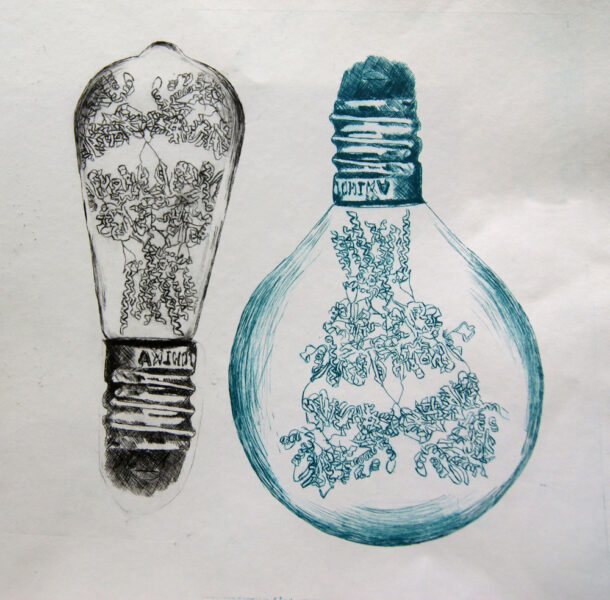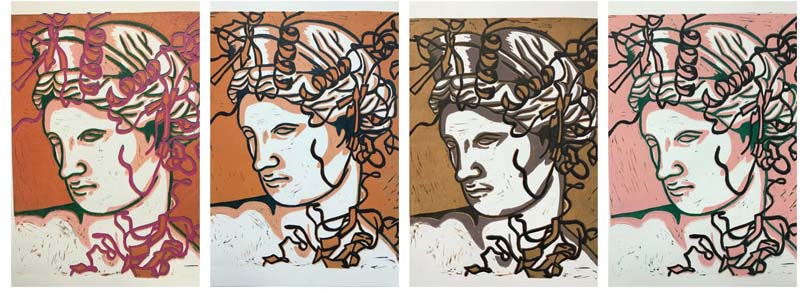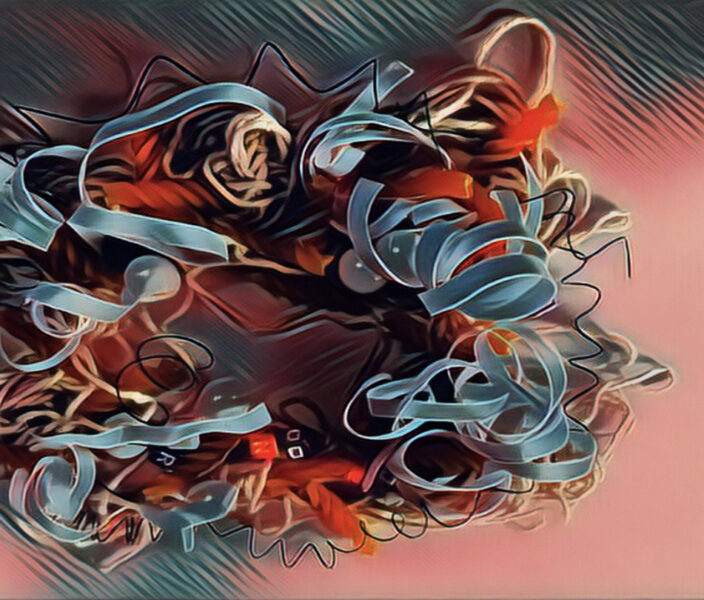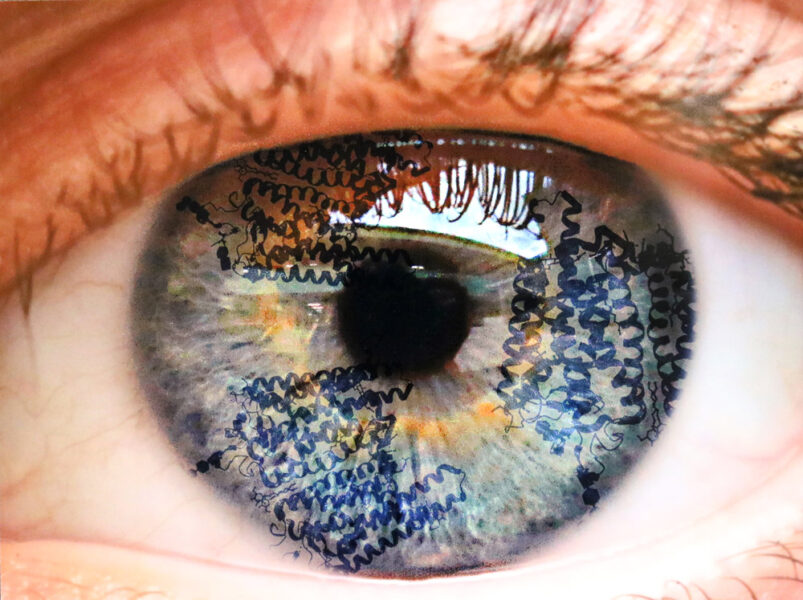Introducing students to the beauty of biomolecules Inspire article
The PDB Art project brings together art and science in the classroom, with school students exploring the wonderful world of molecular structures through the medium of art.
The PDB Art project is run by Protein Data Bank in Europe (PDBe), which is jointly responsible for managing the Protein Data Bank (PDB) archive, a database containing 3D atomic structures for more than 175 000 biomolecules. These structures are crucial for scientists looking for answers to important biological and biomedical questions, for example, relating to disease, metabolism, and developing new drugs.
Bringing art and science together
Through the PDB Art project, students are introduced to the importance of biomolecules such as proteins and DNA, and how these can be visualised in 3D. The aim is to spark their curiosity and inspire them to learn more about a molecule of interest, for example a protein linked to a disease. After learning more about the protein, they are encouraged to create artworks that illustrate the molecule and explain ‘why it matters’. These artworks are then shared widely by PDBe in the public and scientific community through exhibitions and other media, such as a yearly calendar.

©Artwork by Esther Robson of The Leys School/Cambridge/UK
Timeline
September: Start of PDB Art project, contact PDBe
October–February: Classroom learning with PDBe support
March: Artwork submission
July, August: PDB Art exhibition
It started with one student
The project, which started with just a single student, now covers eight schools, including Thomas Gainsborough School (TGS) in Sudbury, UK. Teachers from TGS have used the project to foster a deeper collaboration between the science and art departments. The active-learning strategies employed throughout the project enable teachers to introduce their students to complex scientific topics in accessible ways.
Students were really enthused by this approach to scientific learning, and many were surprised by how valuable it was to combine these subjects in new ways. Students were encouraged to be creative about how they developed the artworks depicting their scientific topics, which challenged them to fully understand the science behind their chosen protein. One of them said, “Although it wasn’t hard to come up with scientific ideas and concepts, it was harder to incorporate them into a piece of art.” The cross-curricular nature of the project helps the students gain interest and confidence in both science and arts. The blend of scientific learning and creative expression provides a unique opportunity for students to explore societal issues through a scientific lens, giving them options to explore future career opportunities.

©Artwork by Alice Turner of Stephen Perse Foundation/Cambridge/UK
Easily scalable
TGS implemented the project broadly, with students aged 12 to 17 years participating at various levels. Dedicated lessons introduced students to molecular structures in the PDB and the basic scientific concepts of proteins and amino acids, using resources provided by PDBe, 3D modelling kits, and activities. Later, the students were reintroduced to molecular structures in art lessons using additional resources from PDBe like a 3D visualisation tool and previous year’s artworks in the PDBe calendar. The students were then encouraged to research a protein of their choice before creating artworks depicting the protein and written descriptions about how their artwork relates to the protein and the world around us.

©Artwork by Charlie Coot of Thomas Gainsborough School/Sudbury/UK
For large groups of students, this structured approach works well, however, it does limit the potential for the students to really explore the science further. For older and more advanced students, TGS ran a more free-form version of the project, with more focus on independent learning outside of lessons and during extracurricular sessions. This allowed students more time to explore and research the scientific topics, thus resulting in deeper interpretations of proteins in their final artworks.
The flexibility of the PDB Art project allows teachers to implement the project in the most suitable way for their target student groups. Much of the scientific content covered in the project is outside the curriculum scope for younger students, however it can be successfully covered by introducing the concepts in accessible ways through modelling kits, and integration with art lessons. TGS found that students engaged better with the active learning strategies than they did in their usual lessons, though they did find that engagement was not as high for lower-set science classes.
A Teach article will follow with a suggested structure and teaching resources for the project.

©Artwork by Tahli Turner of Viewbank College/Melbourne/Australia
Virtual art exhibition
The artworks created through the project are often insightful and visually brilliant, and have covered a broad range of scientific and societal topics, from proteins involved in depression to pieces exploring the impact of viruses and other diseases. To celebrate the PDB Art project and the valuable collaboration between the schools and the PDBe, these fantastic artworks are showcased to a wider audience worldwide. In 2020, the artworks were exhibited in a virtual PDB Art exhibition, which is accessible to anyone with an internet connection.
An online exhibition’ opening event’ celebrated the work created by the students, bringing together audiences from all over the world, including Europe, the USA, Mexico and Australia. This included students, teachers, scientists and artists, and even jewellery makers and engineers, coming together to explore and celebrate the exhibition. This was highlighted in comments from one attendee, who said it was “lovely to see people from differing backgrounds and stages of life interacting and exploring two vital areas of human existence”.
Resources
- More information on the project can be found on PDBe.org/art. If you would like to be part of the PDB Art project please contact us via this form.
- Watch testimonials from students involved in the PDB Art project.
- Read an article on artificial intelligence and protein folding: Heber S (2021) From gaming to cutting-edge biology: AI and the protein folding problem. Science in School 52.
- Art inspired by molecular biology: Stroe O (2019) Art meets molecular biology. Science in School 46:29–33.





